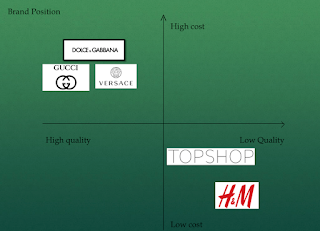Marketing Strategies, Research and frameworks
Marketing Strategies, research and frameworks
Lecture notes:
Connecting with the consumer
• Brands are out of touch with consumer needs
• Brands not in touch with current generational perspectives; example: trans, curvy girls, cultural
• Slow adaption of sustainable issues
• Brands who have historically done well with innovative advertising and marketing and then have dropped the ball recently
• Old school attitudes towards luxury for high end brands (dolce and Gabbana) struggling to connect with new generations
How do consumers consume and connect with the brands?
• Advertising strategies
• Understanding emerging demographics
• Keeping and increasing footfall
• Understanding changing and emerging trends in consumptions
• For example: diversity ethics so ill responsibility
Physical and digital branding advertising strategies
• John Lewis was the physical brand example discussed last week
• Fast fashion online retailers: digital advertising resource online, digital bill boarding, taxis and so on
• Brands that rely on word of mouth as well as all of the above for example Patagonia
• There are also brands that historically have not advertised heavily for example body shop
Much has to do with visual communication
• The forums that demographics now link with
• What draws a consumer and why?
• What are the connectors
• Connection to visual information for example short films and teaser campaigns
More abstract methods of advertising
• Celebrity
• Guerrilla
• Youtube campaigns
• Youtube campaigns
• Subliminal advertising
How branding and marketing drive the fashion industry
• Connects with consumer
• Drives price
• Drives and captures specific demographics whilst trying to pick up new consumers
• Marketing incentives drive consumers for example: e vouchers buy one get one free driving price down for a limited amount of time
• Pushes consumption by selling product through a specific window of time
• Historically brand identity was king
• Brand attachment Locked the consumer in via aspirin
• This is changing now with generational shifts - consumers no longer consume because a brand tells them who to be
Meeting the consumer needs:
• Who they are?
• How to reach them (physically or digitally)
• Where they live
• Their age
• What they are prepared to pay
• Their likes and dislikes
• Their expectations
• Their expectations
• If their product is desirable
• Brands need to research and gather data on their consumers in order to understand them
that’s why research is critical
• Through primary and secondary
• Questionnaires
• Surveys
• Emails
• Telephone calls
• Focus groups
• Photography
• Set up social media forums so you can keep in touch
• Secondary can be in form of mine report’s reliable sources of information
What can struggling brands do to improve to reestablish themselves?
• Connecting to consumer
• Advertising Strategies
• Their reputation
• How they connect to the consumer (do they need to re consider ethics)
• Their history are they sitting on past glories and still expect the consumer to consume because of who the brand perceives themselves to be
• Brand currency; brands developing a better understanding of generation/ cultural shifts and how society is changing



Comments
Post a Comment